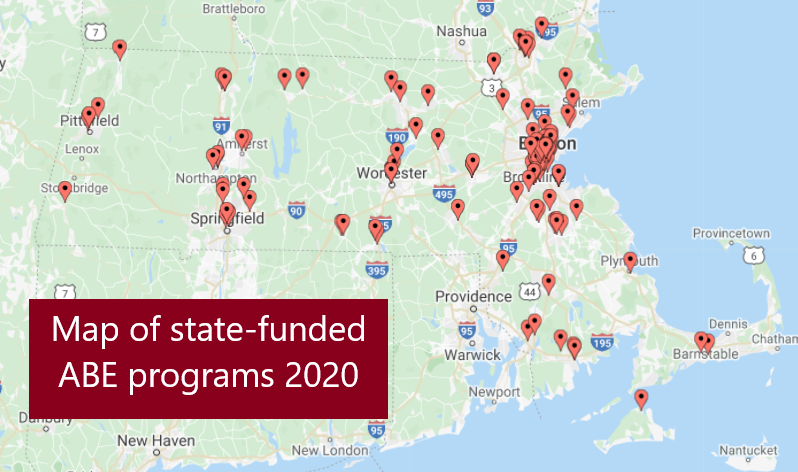Adult Education provides adults with opportunities to develop literacy and English-language skills needed to qualify for further education, job training, and better employment, and to reach their full potential as family members, productive workers, and citizens. Programs provide instructional services for adults over the age of 16 in one of four areas:
In addition to these core educational offerings, adult basic education programs provide a variety of related services, such as citizenship classes, employment and career readiness training, transitions to college, and family, financial, and health literacy assistance.
Who are ABE Students?
In Massachusetts, ABE programs are serving students who are primed to enter the workforce or improve their job skills.
87%
of ABE students are between the ages of 19 and 54
75%
of ABE students are employed or actively looking for work
80%
of ABE students are non-white
(PY 2018 Statewide Performance Report – WIOA Title II Adult Education Program)
Where do ABE programs take place?
ABE services can take place in a formal classroom, one-on-one tutoring, computer assisted instruction, and via distance learning. Service providers in Massachusetts include community-based organizations, local education agencies, community colleges, workplaces, and correctional institutions.
How are ABE programs funded?
Adult basic education in Massachusetts is financed through a combination of state, federal, and private funds. State funds are allocated via line item 7035-0002 as part of each year’s general appropriations act. Federal funds are authorized under the Adult Education and Family Literacy Act, one element of the broader Workforce Innovation and Opportunity Act. Many programs also raise funds from philanthropic and private sources.

